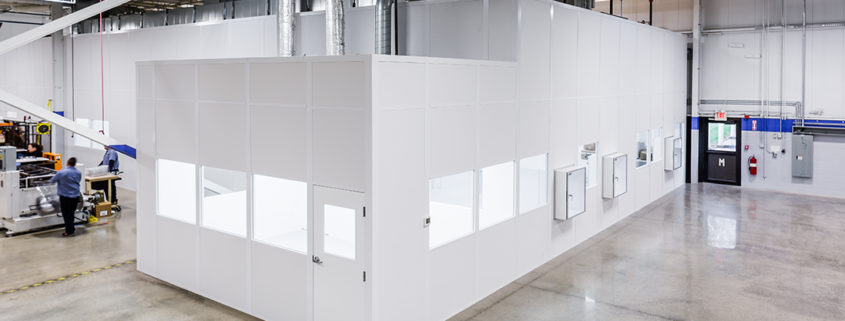OEM Cleanroom Install In One Hour!
Recently, we met one of our OEM’s at one of their customer’s facilities where they had just built a cleanroom. This was for a pharmacy with an eight bed clinic in a small town in West Virginia. They were just finishing up construction of the room and began installation of the TV2 Monitor for cleanrooms (positive pressure rooms). The installation included the Quick check touchscreen monitor, one temperature/humidity sensor and two differential pressure sensors.
The small cleanroom consisted of one small ante (gowning ) room and the work room, which was divided into two areas separated by a polycarbonate divider extended from the ceiling to about 3.5 feet from the floor.
One TV2 pressure sensor measures the pressure differential between the outside area and the ante-room. The second pressure sensor measures the pressure differential between the ante-room and the clean room. The temperature/RH (Relative Humidity) of the working area was also monitored. All three sensors were mounted above the drop down ceiling with velcro an wired back to the monitor that is mounted on the wall by the door into the gowning area.
Each pressure sensor’s input tubes were connected to a plastic static pressure port mounted to a wall snub.
The entire installation process took one hour and one keyhole saw, which was used to poke a couple of holes in ceiling tiles and through the drywall where the Quick check monitor was mounted.
After the four pieces, the monitor and three sensors were in place and the wires run above the drop down ceiling, each sensor was plugged into the monitor. The monitor automatically recognized each sensor and asked how often we wanted to log it’s data. We then set a high and low alarm for each sensor and we were done. It was quick and easy. The TV2 Room Monitor immediately displayed the current conditions so the pharmacist can see if conditions are safe anytime she enters the room.
The QuickCheck Touchscreen display showed the two pressures were two low with a red font until the fans were turned on and the doors closed, at which time they turned green showing that they were above 0.015″ of water.


